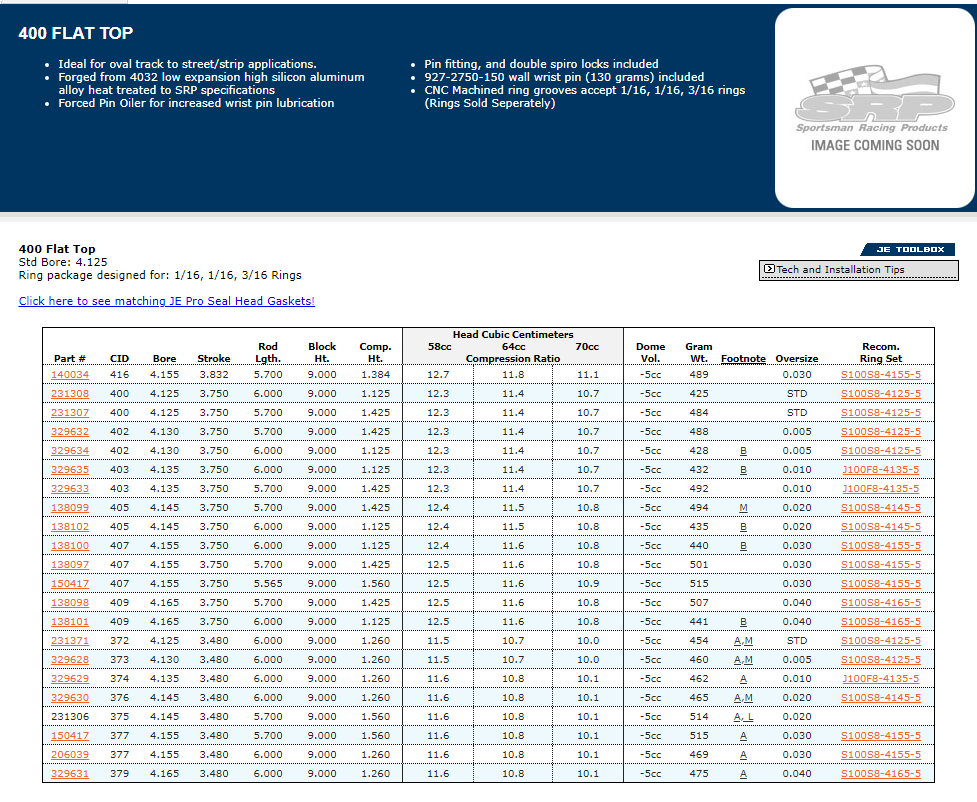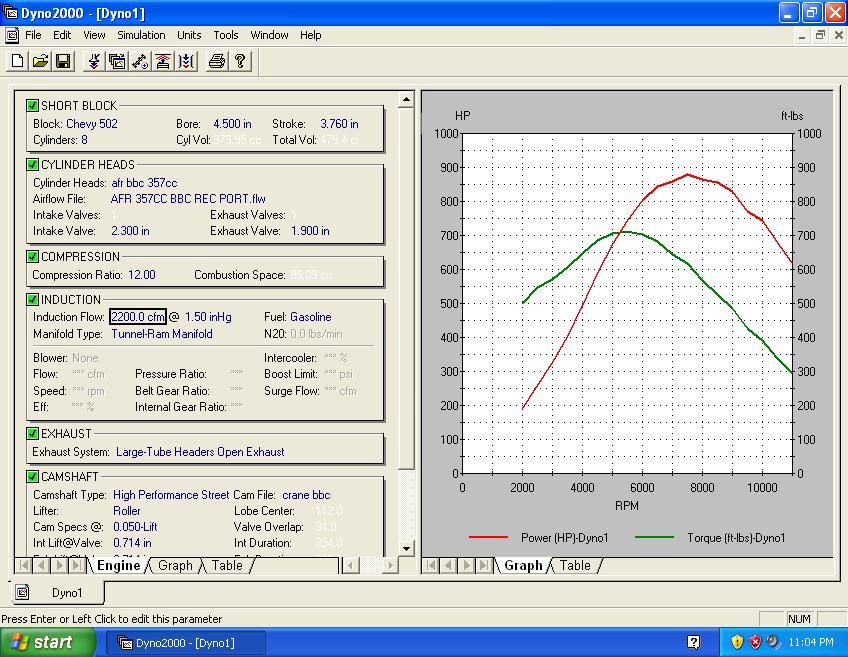now admittedly IM writing this some what tongue in cheek, because Im well aware of the addicted, at times even RABBID SBC faction,
BUT as a dedicated BBC, and old school Pontiac, and mopar BIG BLOCK FAN, who likes building 454-540 bbc, 455-468 Pontiac, 440-500 MOPARS and 392 hemi,s, IM always amazed at the guys who want to stick with the sbc rather than upgrade,to a basic block config thats designed for the extra displacement. but I get guys in my shop all the time who want to build 427-454 SBC engines, for street strip use, and expect both decent street manors and 550-600 flywheel hp I build ocasional sbc engines of 406 (.030 over bore 400sbc engines)and 426 (4.185 bore/3.875 stroke sbc engines)displacement, but far more 383-396 simply due to the base 350 block being far more common, I build a good deal of 383s designed for nitrous us, that easily exceed 550-600hp on the giggle gas, but once you get over a 3.875" stroke things are getting pretty tight in the cam/connecting rod clearance so I try to steer them into a BBC combo if I can, for the simple reason that its a lot simpler to build a 482-489-496 BBC (4.25" stroke 454 with or without a slight over bore) and in most cases the final product cost per horsepower will be slightly in the bbc favor once you try to exceed 550-600hp N/A
yes I can hear the screams already!
but after you have a few brandys and think it thru, many guys find Im correct,If your goal is 550-600hp plus N/A, and you want both reasonable drive ability on the street and an occasional bonzi charge to impress your buddies with reasonable chances of taking the car out without maintenance issues, a big block makes more sense to me
OK ILL STEP BACK, YOU CAN START SCREAMING AND BURNING MY LIKENESS IN EFFIGY
BUT as a dedicated BBC, and old school Pontiac, and mopar BIG BLOCK FAN, who likes building 454-540 bbc, 455-468 Pontiac, 440-500 MOPARS and 392 hemi,s, IM always amazed at the guys who want to stick with the sbc rather than upgrade,to a basic block config thats designed for the extra displacement. but I get guys in my shop all the time who want to build 427-454 SBC engines, for street strip use, and expect both decent street manors and 550-600 flywheel hp I build ocasional sbc engines of 406 (.030 over bore 400sbc engines)and 426 (4.185 bore/3.875 stroke sbc engines)displacement, but far more 383-396 simply due to the base 350 block being far more common, I build a good deal of 383s designed for nitrous us, that easily exceed 550-600hp on the giggle gas, but once you get over a 3.875" stroke things are getting pretty tight in the cam/connecting rod clearance so I try to steer them into a BBC combo if I can, for the simple reason that its a lot simpler to build a 482-489-496 BBC (4.25" stroke 454 with or without a slight over bore) and in most cases the final product cost per horsepower will be slightly in the bbc favor once you try to exceed 550-600hp N/A
yes I can hear the screams already!
but after you have a few brandys and think it thru, many guys find Im correct,If your goal is 550-600hp plus N/A, and you want both reasonable drive ability on the street and an occasional bonzi charge to impress your buddies with reasonable chances of taking the car out without maintenance issues, a big block makes more sense to me
OK ILL STEP BACK, YOU CAN START SCREAMING AND BURNING MY LIKENESS IN EFFIGY




